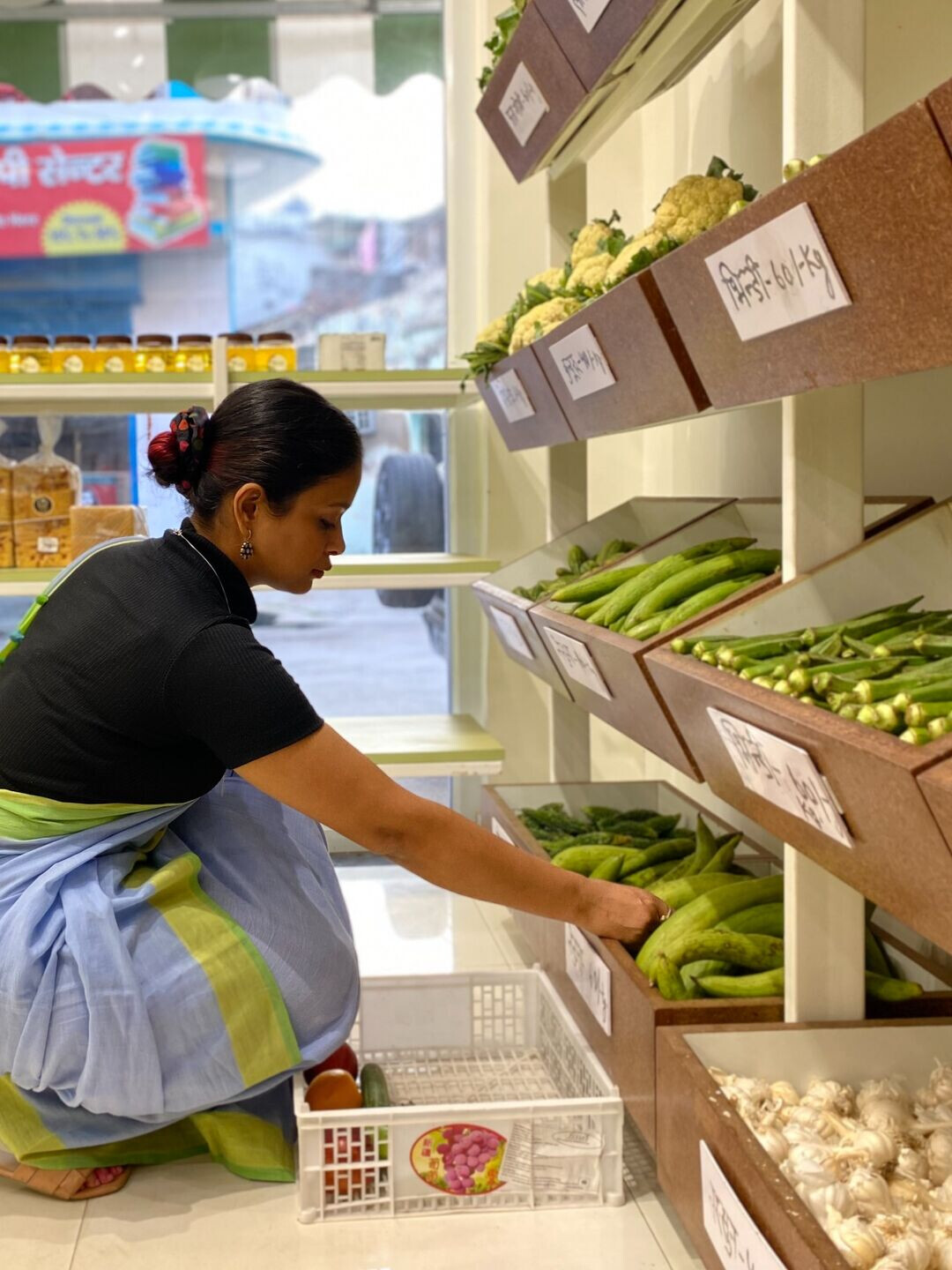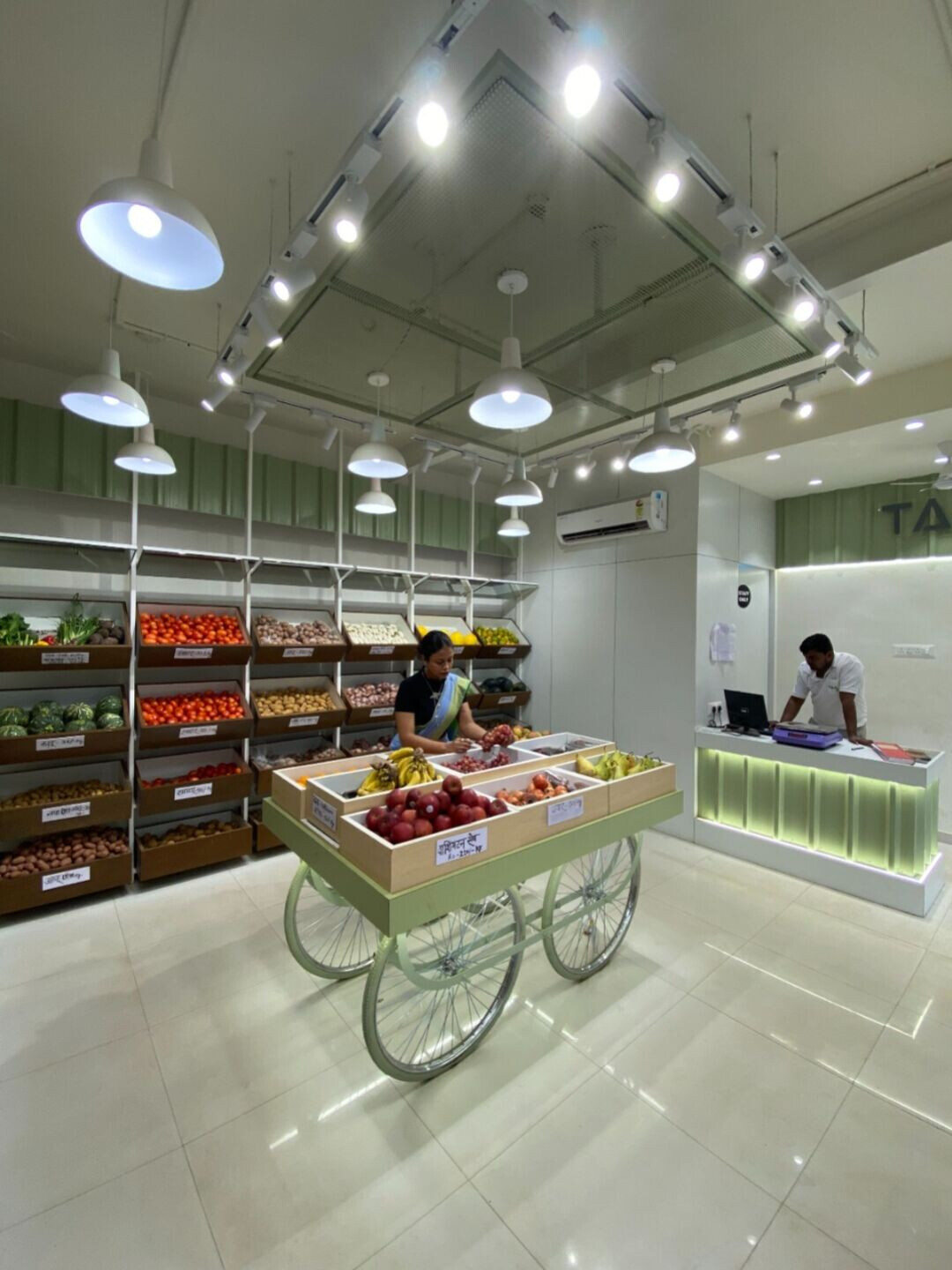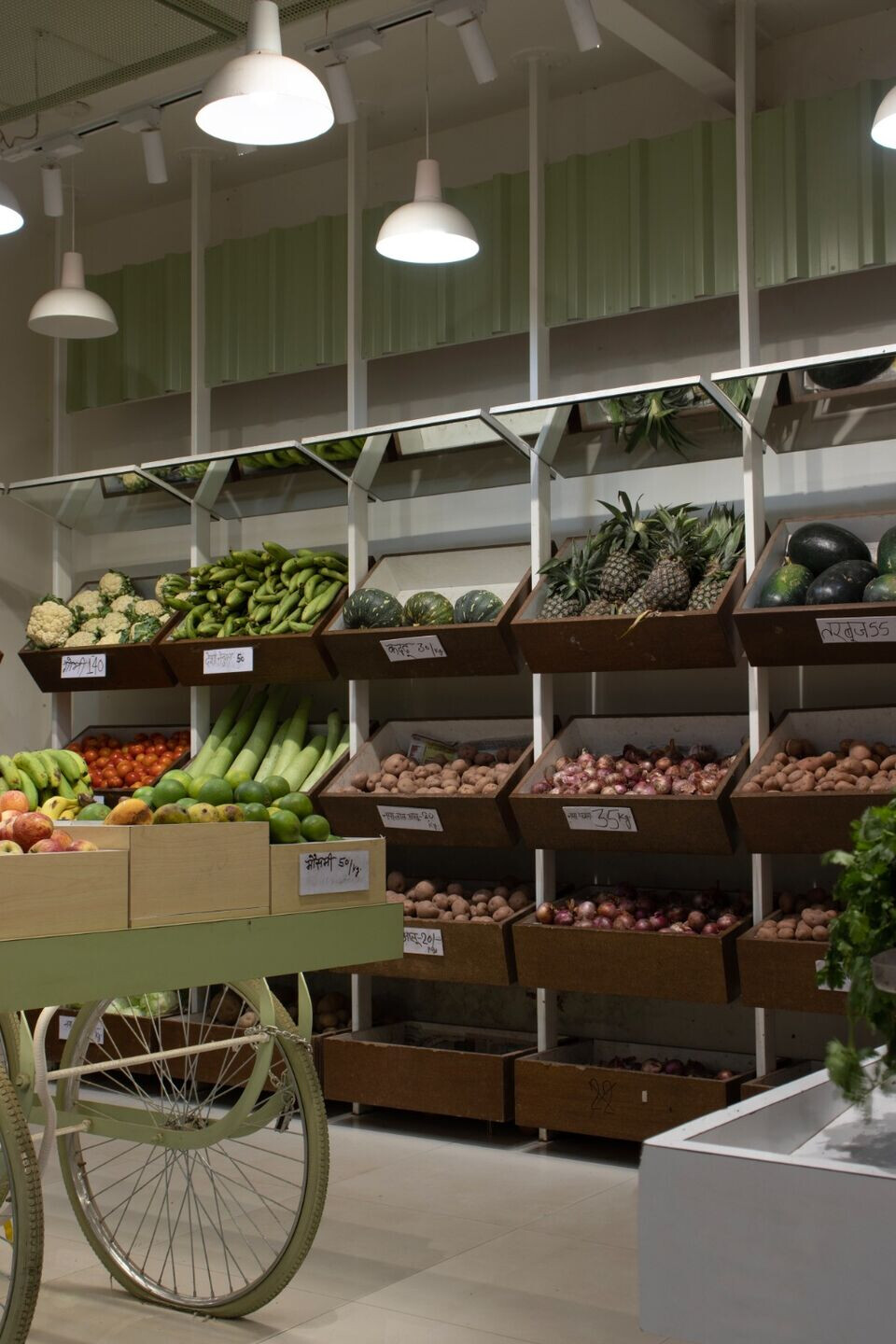Taaza: A Prototype for Sustainable Green-Grocery Shopping in Gorakhpur
Nestled in the bustling yet underdeveloped fabric of Gorakhpur, Uttar Pradesh, "Taaza" is a green grocery store that redefines what a small-scale, budget-conscious retail space can achieve. This project, conceived as a prototype, serves as the cornerstone for a larger vision: a network of branded neighborhood outlets and mobile vending carts tailored to semi-urban communities. The brief was straightforward yet challenging: create a store that feels fresh, is eco-friendly, economical to construct, and offers customers effortless access to green groceries—all within 300-350 square feet.

The design strategy for "Taaza" was a delicate dance between constraints and creativity. With a tight budget at hand, the project demanded ingenuity in material selection and execution. Local resources became the cornerstone of the design, with straw boards—a sustainable material crafted from compressed agricultural waste—chosen as the primary structural element. These eco-friendly boards not only reduced the carbon footprint but also reflected the project's core value of sustainability. Complementing this, discarded metal roofing sheets were repurposed to form the enclosure, while locally sourced mild steel provided a robust framework, hand-crafted by skilled local labor.

Spatially Compact, Yet Generous in Experience
The spatial layout of "Taaza" prioritizes functionality and customer comfort. Despite its modest size, the store offers an intuitive shopping experience, ensuring every square foot serves a purpose. A traditional Thela (street cart) takes pride of place at the center, serving as a focal point while paying homage to Gorakhpur's vibrant street culture. This cart is not just a display unit for fresh fruits but also a symbol of the town’s local charm, blending seamlessly with the store's aesthetic.
The surrounding racks are thoughtfully designed, with careful attention given to ergonomics. One unique feature is the use of slanted mirrors, allowing individuals of shorter height to easily view items on the higher shelves. This small but significant detail demonstrates the project's human-centric design approach, ensuring inclusivity for all.

A Fresh Palette of Colors and Materials
To evoke an aura of freshness, the design employs a pastel green color palette, subtly reinforcing the brand identity while creating a soothing environment. Handcrafted light fixtures, made from inexpensive metal bowls and inverted plastic glasses, were designed and painted white to enhance brightness without
straining the budget. The ceiling, formed with a recycled metal mesh, adds an industrial yet airy quality, aligning with the store’s sustainable ethos.
Challenges and Triumphs
Balancing the project's ambitions with its financial limitations was no small feat. The strong budget constraint meant relying entirely on local materials and labor, pushing the design team to innovate within these boundaries. Yet, it was this challenge that birthed a store that is not only economic to build but also swift to assemble, making it ideal for replication across the town.

A Model for the Future
"Taaza" exemplifies how thoughtful design can transform a simple green grocery store into a space that resonates with its community. It stands as a prototype that is not only easy to replicate but also imbued with a branded identity and an unmistakable aura of freshness. As a flagship model, it paves the way for a network of sustainable, locally rooted retail spaces across Gorakhpur, setting a new standard for accessible, eco-conscious design in semi-urban India.

In "Taaza," we see the fusion of tradition and innovation, local craftsmanship, and global aspirations—a testament to the transformative power of design, even in the smallest spaces.























